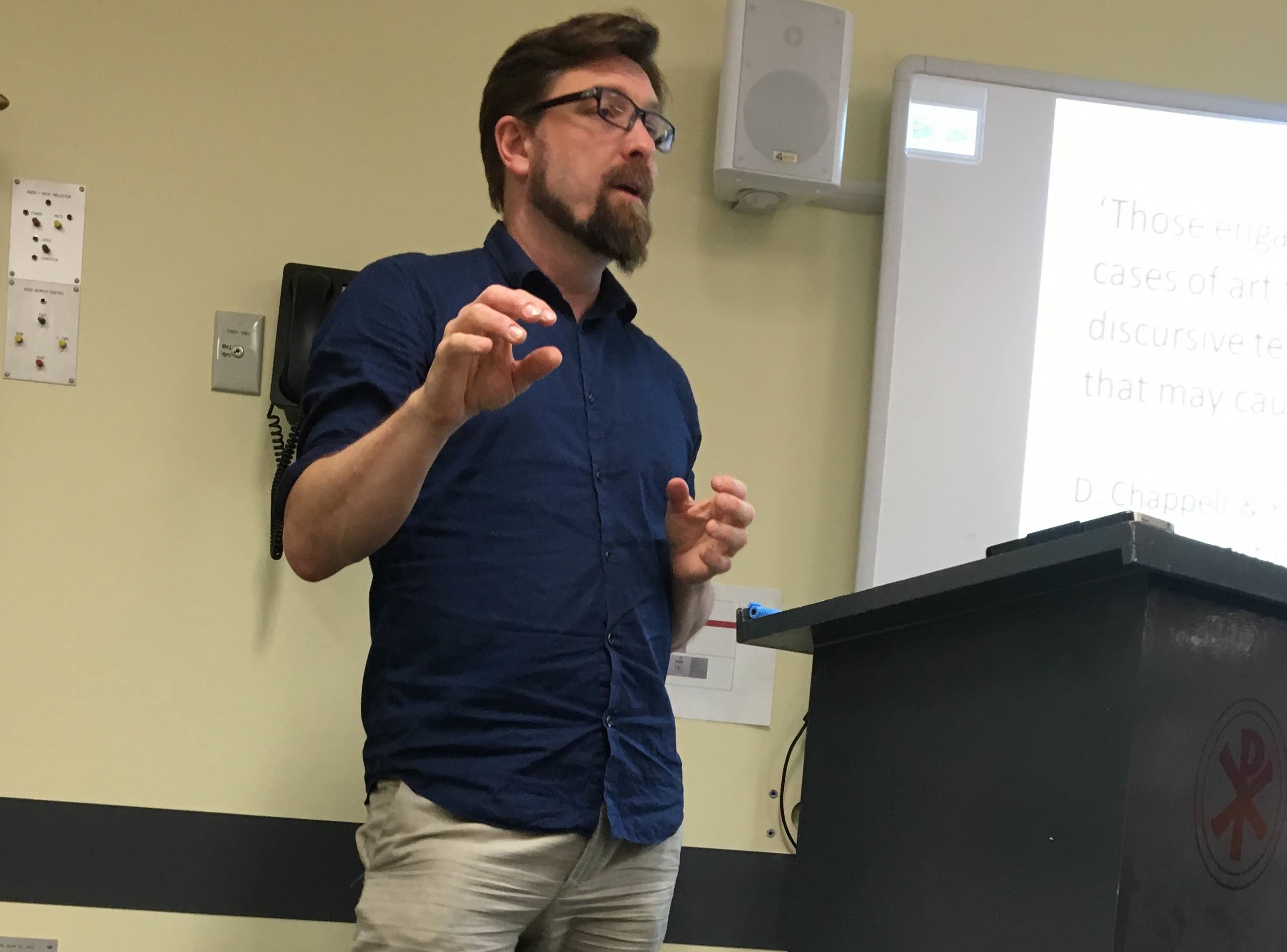Our research programs are divided into five clusters. Explore in more depth below:
Markers of Authenticity

Markers of Authenticity is a cross-disciplinary research network which hosts conversations about the markers of authenticity in human experience of the contemporary and past worlds from a range of perspectives.This broad research program takes in issues as diverse as:
- authorial and creative practice

- memory and cognition
- cultural heritage
- looting and the antiquities trade
- forgery
- the ethics of our relationship with the past and with its living representatives
- the experience of museums in the digital age
These issues form the starting points for interdisciplinary discussions ranging over the three research themes within the Faculty of Arts Strategic Research Framework.
Enquires about the Markers of Authenticity Seminar Series should be sent by email to Malcolm Choat.
Check out the Markers of Authenticity blog here: https://markersofauthenticity.wordpress.com/
The research program includes the following projects:
- Forging Antiquity: Authenticity, forgery, and fake papyri (Malcolm Choat, Rachel Yuen-Collingridge, Rodney Ast)
Dynamics of the Ancient Human Environment
This program includes the following projects:
- Let the walls speak! The tombs of Beni Hassan
- The ancient Egyptians' atypical relationship with invertebrates
- A spring of silver, a treasury in the earth: Coinage and wealth in Archaic Athens
- Strangers in a strange land: The ancient Egyptian mummies of Macquarie University
- An environmental history of ancient Meir
- Wadi Araba and Abu Rawash projects
- Secrets of the ancient Egyptian embalmers: an archaeological, historical and scientific investigation of the origins and development of mummification
Language, Script, and Communication
This program includes the following projects:
- Knowledge transfer and administrative professionalism in a pre-typographic society: Observing the scribe at work in Roman and early Islamic Egypt
- The Dictionary of Roman Biography project
- Communication networks in Upper Egyptian monastic communities in the 6th to 8th centuries CE
- Language, literacy, and acculturation in Early Ptolemaic Egypt
- Idiolect and social dialect in the Zenon Archive
- Words from the sand: A lexical analysis of early Greek papyri from Egypt
- Communication and media in the development of the Post-Roman/Early Medieval and Byzantine World (5th to 8th centuries)
Cultural contact and transformation in the ancient world
This program includes the following projects:
- Bribir Excavation project
- Translation and interpretation of the Confucian texts in the excavated 4th century BCE Guodian Chu bamboo slips from China
- China and the ancient Mediterranean world
- Gallipoli before Gallipoli
- Macquarie University Theban Tombs project
- Immortal Egypt: Tradition and transition during the First Intermediate Period at Meir
- Understanding the barbarian in Late Antiquity
Religion and Society in the Ancient World
This program includes the following projects:
- How old are the oldest Christian Manuscripts? The modern history of ancient Christian papyri and a new approach to establishing their dates
- Corpus Fontium Manichaeorum
- Mission and inculturation: The Manichaean and Nestorian experience in China
- Cosmology in the warring states period
- Desert monasticism in Byzantine Egypt
- Monks in the pharaohs' tombs: Recovering Coptic-era monasticism in the ancient Egyptian landscape of Akhmim
- Manichaean hymns and prayers in Chinese translation: An investigation of the gāthās in the Dunhuang Hymn-scroll
- Papyri from the rise of Christianity in Egypt